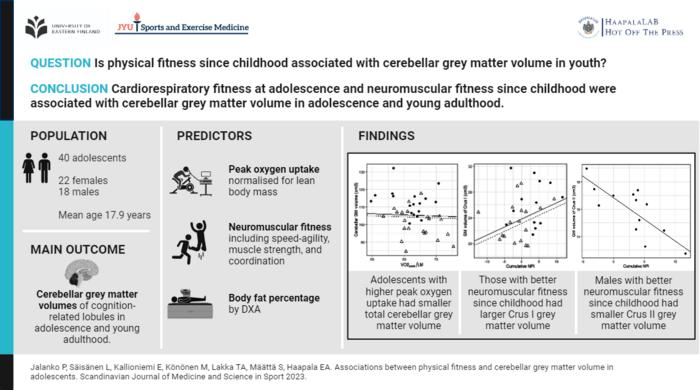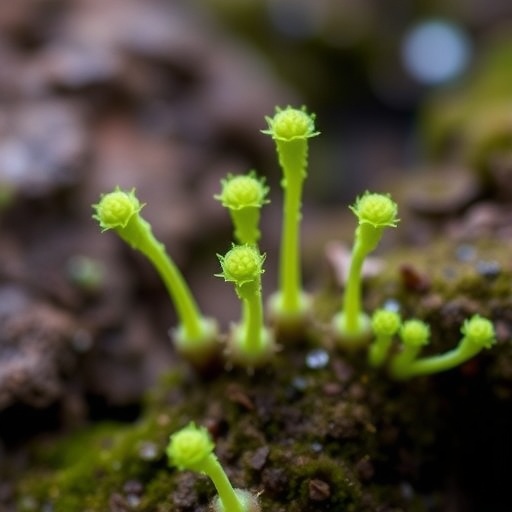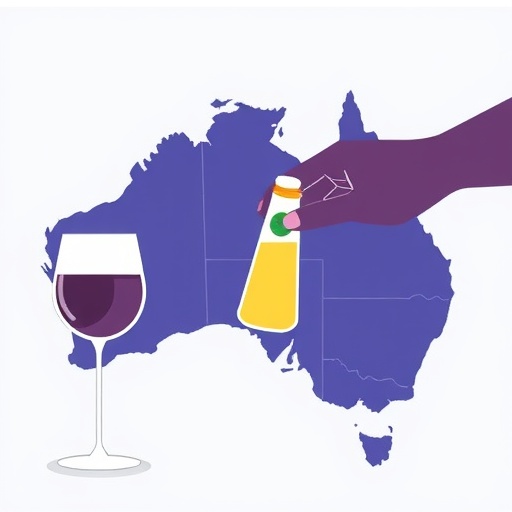Physical fitness since childhood is associated with cerebellar grey matter volume in adolescents. According to a recent study conducted at the University of Jyväskylä and the University of Eastern Finland, those who were stronger, faster and more agile, in other words, had better neuromuscular fitness since childhood, had larger Crus I grey matter volume in adolescence.

Credit: Petri Jalanko
Physical fitness since childhood is associated with cerebellar grey matter volume in adolescents. According to a recent study conducted at the University of Jyväskylä and the University of Eastern Finland, those who were stronger, faster and more agile, in other words, had better neuromuscular fitness since childhood, had larger Crus I grey matter volume in adolescence.
Despite the importance of the developing cerebellum on cognition and learning, the associations between physical fitness and cerebellar volume in adolescents have remained unclear. This study examined the associations of physical fitness with grey matter volume of cerebellar lobules related to cognition in adolescents, and whether these associations differed between females and males.
Those adolescents with better neuromuscular fitness since childhood had larger Crus I grey matter volume. However, adolescents with better cardiorespiratory fitness had smaller total cerebellar grey matter volume. Moreover, males with better neuromuscular fitness since childhood had smaller Crus II grey matter volume.
“Our study highlights the importance of physical activity through childhood and adolescence, leading to better physical fitness, as it might be relevant to cerebellar volumes related to cognition and learning. However, the associations we observed are in part contradictory,” says Doctoral Researcher Petri Jalanko from the Faculty of Sport and Health Sciences at the University of Jyväskylä.
“The study sheds light on the associations between physical fitness and the cerebellum. Future randomised controlled trials utilising direct cardiorespiratory fitness measurements and novel brain imaging to assess a larger population and both sexes separately are needed to better understand the associations and causality between physical fitness and cerebellar volumes in adolescents,” Jalanko says.
The findings are from the FitBrain study, which included 40 participants from the 8-year follow-up examinations of the Physical Activity and Nutrition in Children (PANIC) study. Of the participants, 22 were female and 18 were male, and their mean age was 17.9 years.
Cardiorespiratory fitness was assessed by maximal ramp test on a cycle ergometer, muscular strength with standing long jump, speed-agility with the 10 x 5 m shuttle-run test, coordination with the Box and Block Test and neuromuscular fitness as the sum of standing long jump, Box and Block Test and shuttle-run test z-scores. Cerebellar volumes were assessed by magnetic resonance imaging. The study was published in the prestigious Scandinavian Journal of Medicine and Science in Sports.
Journal
Scandinavian Journal of Medicine and Science in Sports
DOI
10.1111/sms.14513
Article Title
Associations between physical fitness and cerebellar gray matter volume in adolescents
Article Publication Date
9-Oct-2023




